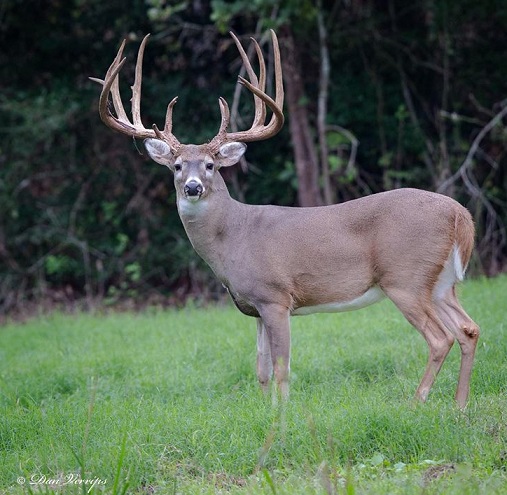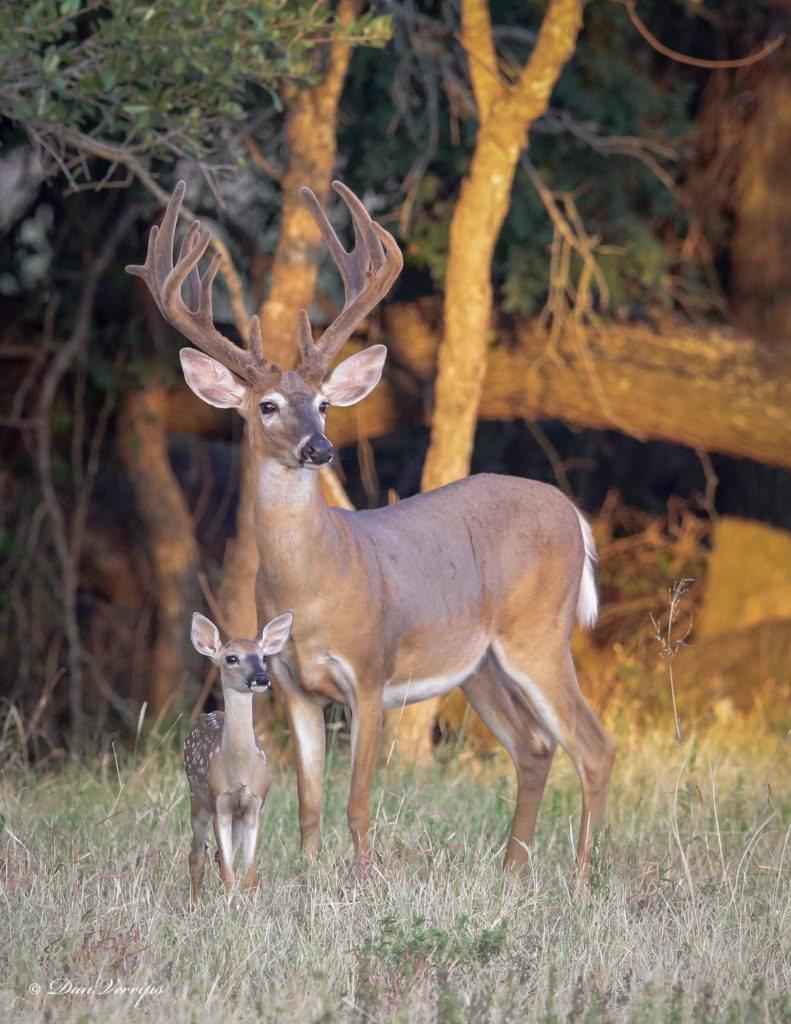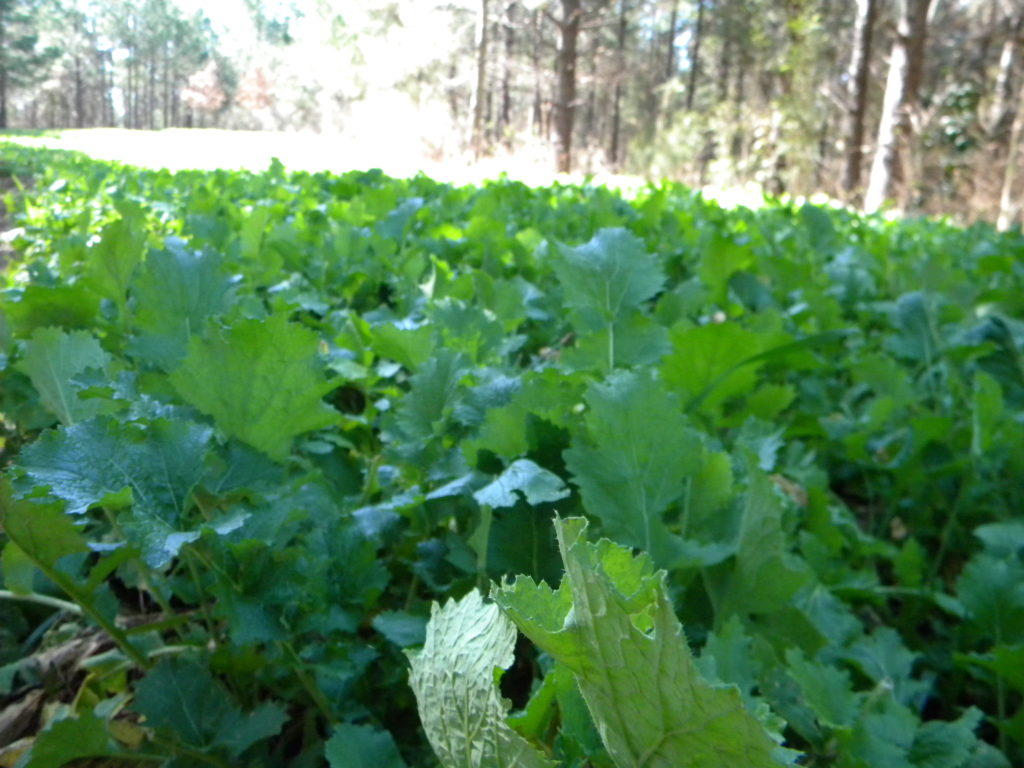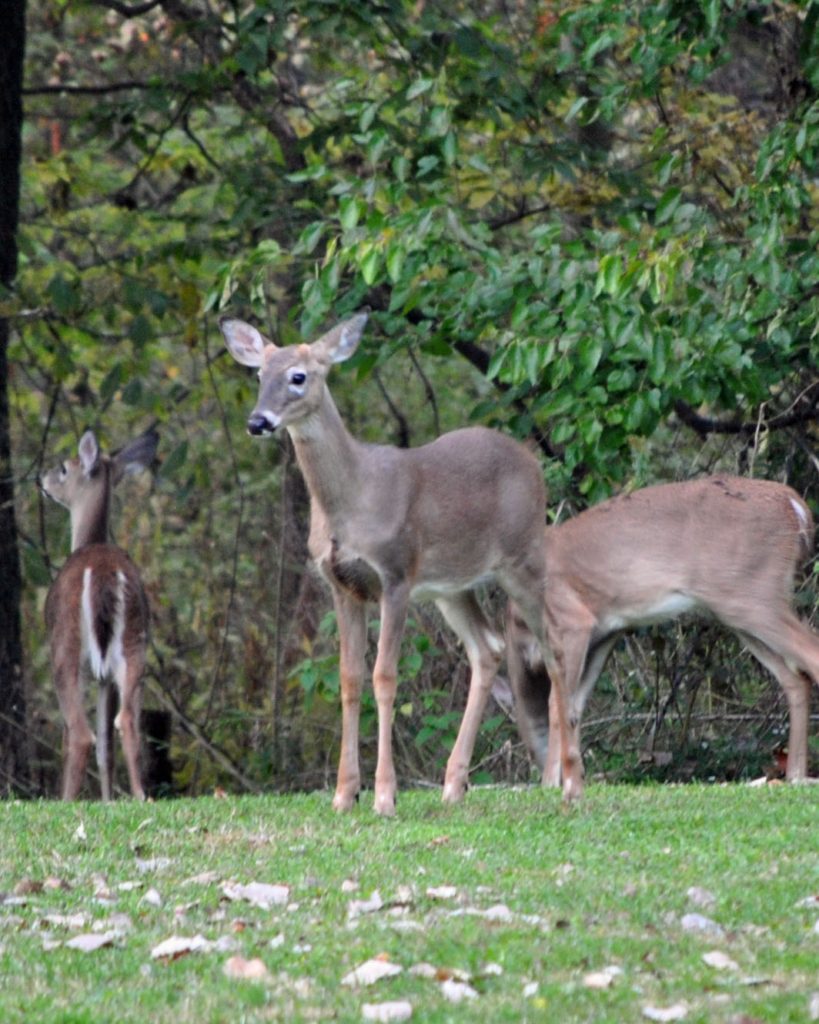
Plan for Managing White-Tailed Deer
YOU NEED A PLAN!
Over the last four decades I have been blessed to work and live with white-tailed deer in every state and province from Mexico to Canada. Along the way, I have met some of the greatest folks—private landowners—who have dedicated their time, sweat and money to making their land a better place for wildlife.
Unfortunately, however, many of these landowners contact me after they become frustrated at not achieving their expectations for their property. The number one reason for failure is not having a management plan and objectives. So, this article is aimed at informing you about how to establish goals for your wildlife management program and developing a plan to accomplish these goals.
What is a goal?
There is a huge difference between a goal and an expectation! When asked, many landowners tell me their goal is to produce bigger bucks. That is not a goal, it is an expectation.

Photo Courtesy of Dan Verrips
How do you define “bigger”? A well-developed goal would be something like, “We want to produce 5 mature bucks each year from this property.” The difference lies in that a true goal is a target against which data can be collected and analyzed to determine success.
After all, “success” can be defined as achieving a goal. So, the first place to start in a successful whitetail management plan—or a wildlife management plan for that matter—is a well-defined goal or set of goals.
The Plan?
Once you have established your goals, the next step is develop a set of objectives to achieve the goal. For example, if one of the goal is to have a deer herd with at least 25% mature (4.5 years or older) bucks, an objective would be to produce and protect enough bucks to allow this proportion of animals to reach the targeted age. Sub-objectives would include the individual steps in getting there, including:
- Increasing recruitment to 50%.
- Setting minimum antler restrictions to protect yearling and two-year old bucks.
- Improving nutrition on a 365 day basis.
Prescriptions
Once you have the objectives, the next step is a detailed, written prescription for each activity needed to achieve the goal. I use the word, prescription, carefully since it is the second-most important component to a management plan. You go to the doctor and he diagnoses your illness. The next step is to prescribe medications to cure the disease. He then writes you a prescription to your pharmacist for the medications. The medications come with a label and a written document telling you exactly how to take the medicine and when. The directions are very specific and logically organized into, Step 1, Step 2, and so on. Failing to following these instructions will mean less effectiveness of the medication and possibly physical harm or death!
A management plan then should include a set of prescriptions, telling you what, when, where and how to do each recommended activity. Logically, then a management plan cannot be a fill-in-the-blank form!
It has to be a detailed document, prepared by a professional who truly understands YOUR land and YOUR goals. What are the components of a good plan?
Get a Map!
The first is a written statement of your goals and expectations, followed by the set of starting conditions and setting of your property. This means there should be a map and/or aerial photograph of the property, with the various habitats and infrastructure clearly designated. Aerial imagery should be up-to-date enough to allow accurate interpretations of what is going on at this point in time. In these modern times, there is no excuse for not being able to easily assemble such information, including soils and topography.

Photo Courtesy of Nature’s Eye Consulting
Manage Habitat
Habitat is the base of all wildlife management. Each habitat type on your property provides some utility to the animals living there; such as thermal cover, escape cover, browse, travel corridors, etc. Habitats must be considered in a landscape context, meaning how the habitat elements are distributed around your property, and how their presence affects other nearby habitats.
For example, it makes no sense to have cover next to cover; it is then all the same thing. The basic habitat management unit for whitetails is 80-100 acres, within which every need of a deer must be met. So, we usually overlay a grid of this size over the property to assess the utilities of each habitat and what is lacking. You also have to examine each grid (management subunit) in the context of adjacent grids. The best example is the travel corridor. What good does it do to have a nice travel corridor across a grid that simple disappears when it reaches the border of the next?
Once these habitats and their current utility are determined and designated, it is time to consider what must be done to improve or maintain each of these. That is where the prescription comes into play. Here’s a good example. One of the habitats most needed by deer in the South is summer thermal cover, characterized as having a closed overstory for shade and a clear understory for wind movement. Sound simple enough? Yet, how do you create such a habitat and how do you maintain it in the perfect condition?
East Texas Habitat
In eastern Texas, we begin developing summer thermal cover the day pine trees are planted. We implement a thinning and burning program, beginning about years 7-10 with a thin and burn. The second entry into the timber stand occurs at age 15, when we really ramp up activities needed to ultimately develop a habitat with the right components of summer thermal habitat. Prescribed burns are conducted annually or every two years if possible, and the density of trees continued to be reduced to about 20 trees per acre by age 25. The next step is to consider how long this condition will last (about 80 years), and how this area will be rejuvenated to once again provide thermal cover benefits. Along the way, income is produced for the landowner, as trees are removed that have value.
Food & Water Distribution
Other elements to consider in the plan include water availability and distribution across the landscape. This may involve pond construction, or may be installation of artificial sources from water lines or small water tanks and troughs. Natural food sources such as browse also have to be considered. A deer eats about a ton by dry weight of forage annually. That means if your goal is to have a deer to ten acres (8-10 per unit), you have to produce at least 20 tons of natural foods annually (allowing for no more than 50% consumption of the standing vegetation to prevent damage).

Photo Courtesy of Nature’s Eye Consulting
An acre of unmanaged forest property in East Texas produces from 25-200 pounds of actual deer food. That means it takes much more land to feed the number of deer set by your goal. The prescription then should include what needs to be done and when to provide a sustained yield of deer food. Whether it be South Texas or the High Plains, deer browse no longer is available when the vegetation passes 5 feet in height. This means you will have to do something (roller chop, burn, herbicide, etc.) to keep browse within the reach of deer. Most habitats will go out of deer food production in 5-12 years, even in drier climates.
Managing the Deer Population
The deer population and its dynamics must be considered in your plan. The deer herd is more than “happy” to tell you how they are doing, IF you ask the right questions. That means quality records on your herd’s productivity. Census and population counts are really meaningless, other than to give you an index of your deer population. Most census techniques such as helicopter counts and spotlight counts carrying with them errors of at least ±30%; meaning if your helicopter count says you have 100 deer, you have somewhere between 70 and 130!
A good population plan should include what records you need to take on your herd; usually including recruitment, dressed weights, ages, whether does are in milk at harvest, fetal counts and ages, and antler measurements. These records allow you to assess progress toward your goals.

Going back to the habitat, a browse analysis will also tell you how the deer are doing; but, it will not tell you how many deer you have! Instead, a browse survey tells you if your land is under-, over- or well-stocked. Recruitment is one of the most misunderstood components of deer population management. Recruitment is NOT fawn crop; the number of fawns alive in fall. Recruitment is the number of fawns born this year that are alive and enter the population as yearlings.
Managing People
Lastly, a management plan should include people management recommendations. By this, I mean what must be done to help the people involved—landowner, family, guests and clients—help make the plan a success. It does no good to have a high recruitment, if your hunters are shooting the majority of your best bucks!
At a club I manage in Michigan, our people plan also included teaching our hunters how to be better hunters. Shooting skills had to be improved, as well as basic woodsmanship and hunting skills. We also developed objectives to involve the people in the management program, helping us gather data from the herd and habitat. Being involved in data collection encourages a proprietary attitude among people and faith in what is being done to achieve the goals.
Why have a management plan?
The purpose of a management plan is far more than helping you achieve your goals for your land. A management plan is a written document, with a long lifespan. It also is a legal document that can be used for many purposes. For example, I once worked with a landowner in Georgia who set up an intensive management plan to support his deer industry-related business. The IRS soon came back to him and declared his property as a “hobby farm,” and disallowed all deductions as such. Yet, the first thing we did on starting his program was develop a management plan, which specifically stated the goal of providing support to his business in the form of product testing. It took a while, but IRS eventually recanted and declared his operation as a legitimate business. Other uses may be related to inheritance and your wishes for your land when you pass away. A plan can be included in a trust provision. Properties with a well-established management plan also are more valuable on sale of the property. So, you see a plan is mandatory to any landowner, whether it be for wildlife management or any other land-based activity.
I hope this short article has given you some things to think about in managing your land. It may be a cliché, but the old adage “If you fail to plan, you plan to fail,” never was more true when it comes to managing land.
Dr. Deer
Dr. James Kroll is known widely as “Dr. Deer”. He’s received his PhD from Texas A&M in 1973 and since 1981 he’s been a Professor of Forest Wildlife and Director at Institute for White-tailed Deer Management and Research, College of Forestry, Stephen F. Austin State University. Check out his website right HERE
